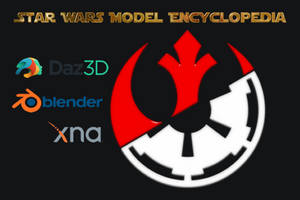ShopDreamUp AI ArtDreamUp

Star Wars models for DAZ
Images of available Star Wars models for your 3D rendering. Note that these are not downloads but, where possible, download links will be on the pages. Some are hi-res characters and clothing for G8 and G3 models, some are simple objects such as vehicles. I'm hoping this will be a fairly exhaustive look at both free and premium models available for Star Wars fans.
$10/month
What if Raymond Chandler wrote Lovecraft stories?
CASEFILE: ARKHAM
I've teamed up with the ever-talented Patrick McEvoy to create a new graphic novel project!
A hard-boiled detective.
A missing painter named Pickman.
And some extremely vengeful fishmen working for the Innsmouth mafia.
CASEFILE: ARKHAM. It's Raymond Chandler meets H.P. Lovecraft on the mean streets of Arkham.
LEARN MORE: https://www.kickstarter.com/projects/309827462/case-file-arkham
WORLD WAR KAIJU - Pre-Order on Amazon
My latest graphic novel, WORLD WAR KAIJU will be available in stores in late July. Pre-order your copy today on Amazon.com [LINK].
ABOUT THE THE BOOK
“What if Doctor Strangelove created Godzilla?”
World War Kaiju is the story of an alternate history, one in which the atom bomb was never created and the ultimate weapon of mass destruction is the kaiju—fifty foot tall radioactive beasts spawned from the mysterious KAI-235 isotope. Follow the journey of one journalist as he teams up with a retired CIA operative to uncover the truth about the conspiracy behind the monsters…
…who are the architects of the inevitable
UTOPIATES NEEDS YOU!
UTOPIATES: Sex, Drugs, & Bio-Tech! The voice of Aeon Flux is back!
I'm currently running a Kickstarter to adapt my latest graphic novel, UTOPIATES, into a full cast audio drama starring Denise Poirier, the voice of AEON FLUX. Watch the animated preview, support the campaign, spread the word.
WATCH THE PREVIEW: www.kickstarter.com/projects/2112629439/utopiates-audio-drama
ABOUT THE PROJECT
A new Kickstarter has been launched by AudioComics to help fund their latest full-cast audio drama, UTOPIATES. Based on the award winning graphic novel by Josh Finney (Titanium Rain, Star Trek: Enterprise) and Kat Rocha (Giant-Sized Batman #1), the p
If you sent me a note about UTOPIATES and script
Someone sent me a note about UTOIATES and had some questions about script writing. For whatever reason Deviate Art erased the note before I could reply. Could you please contact me again?
Sorry about that.
-Josh
© 2012 - 2024 Josh-Finney
Comments4
Join the community to add your comment. Already a deviant? Log In
Really good article!
Thanks for the information! :3
I've been garnering an audience for my webcomic here on DA 'DiRT' (a small audience but nonetheless I am thankful and proud that these awesome people are even HERE!) and have been itching to expand , primarily by selling each completed volume in physical form.
I always figured you have to attend conventions at some point and the truth is, the only thing holding me back is my shyness nature. Not to the point where I'm unapproachable, but enough that I feel kinda awkward having to pitch stuff to people. But alas this is part of the game! So Ima have to suck it up and just go for it. X'D
Thanks for the information! :3
I've been garnering an audience for my webcomic here on DA 'DiRT' (a small audience but nonetheless I am thankful and proud that these awesome people are even HERE!) and have been itching to expand , primarily by selling each completed volume in physical form.
I always figured you have to attend conventions at some point and the truth is, the only thing holding me back is my shyness nature. Not to the point where I'm unapproachable, but enough that I feel kinda awkward having to pitch stuff to people. But alas this is part of the game! So Ima have to suck it up and just go for it. X'D
